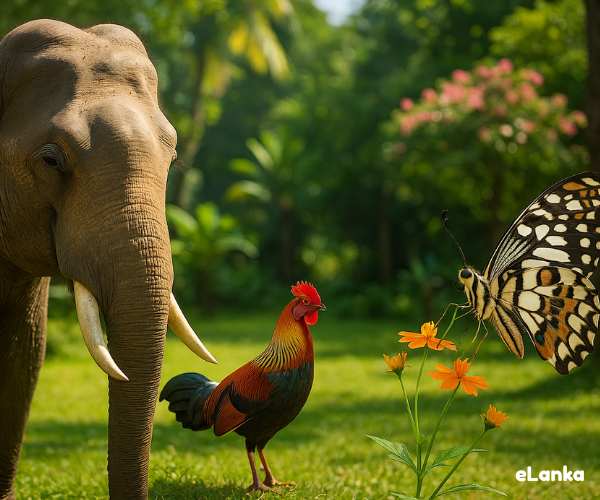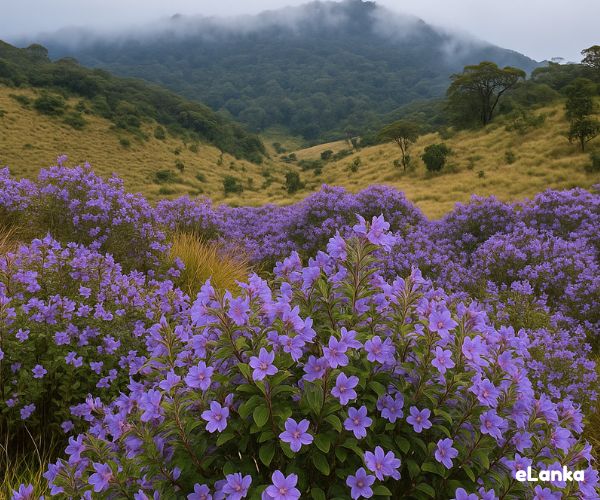From Birds to Butterflies: Showcasing Sri Lanka’s Rich Natural Heritage – By Nadeeka – eLanka

When people think of Sri Lanka, the first images that usually come to mind are golden beaches, ancient ruins, and fragrant tea estates. While these are indeed part of the island’s charm, there is another story that deserves equal attention: Sri Lanka’s extraordinary biodiversity. From colourful birds soaring above the forests to delicate butterflies that brighten village gardens, the island is a living showcase of nature’s richness. This unique natural heritage is increasingly being recognised as a cornerstone for sustainable tourism and conservation.
A Small Island with Big Diversity
Although Sri Lanka covers just over 65,000 square kilometres, it is home to an astonishing variety of species. The island’s location in the Indian Ocean, combined with its diverse ecosystems — rainforests, dry zones, montane highlands, wetlands, and coastal habitats — makes it one of the world’s top biodiversity hotspots. Scientists estimate that more than 20% of Sri Lanka’s species are found nowhere else on Earth.
This includes over 450 recorded bird species, around 90 species of freshwater fish, 120 mammals, hundreds of reptiles and amphibians, and countless insects. For visitors, this means that a single trip could involve whale watching on the southern coast in the morning, spotting elephants and leopards in a dry zone national park in the afternoon, and finishing with a highland birding walk the next day. Few destinations can offer that kind of variety in such a compact space.
Birds: The Feathered Ambassadors of Sri Lanka
Birdlife is often the first doorway through which travellers encounter Sri Lanka’s biodiversity. The island is a paradise for birdwatchers, hosting both endemic species and migratory visitors. Iconic species such as the Sri Lanka Junglefowl (the national bird), the brightly coloured Blue Magpie, and the elusive Serendib Scops Owl are prized sightings.
Wetlands like Bundala National Park and lagoons around Mannar attract thousands of migratory birds during the northern winter. At the same time, Sinharaja Rainforest offers opportunities to observe mixed-species bird flocks, a behaviour rarely seen elsewhere at such scale. This diversity makes Sri Lanka a year-round destination for bird enthusiasts, drawing both experts and casual travellers.
Butterflies: Small Wonders with Big Significance
If birds provide drama and colour to the skies, butterflies add subtle beauty to Sri Lanka’s landscapes. The island records around 245 species of butterflies and skippers, including endemics like the Sri Lanka Birdwing, one of the largest butterflies in Asia. Many species are closely tied to particular habitats, meaning their presence can indicate the health of ecosystems.
Butterflies are not only a delight for photographers but also play a role in pollination and ecological balance. Garden hotels and eco-lodges increasingly plant native flowering species to attract them, turning their grounds into mini-sanctuaries. For travellers, a butterfly walk can be as rewarding as a safari, especially when guided by local naturalists who explain their life cycles and behaviours.
Mammals, Reptiles, and Beyond
Of course, Sri Lanka’s natural heritage goes well beyond birds and butterflies. The island is world-famous for its elephants, with gatherings at Minneriya National Park considered one of the largest wild elephant congregations on Earth. Leopards in Yala and Wilpattu attract global attention, while marine giants like blue whales and sperm whales patrol the surrounding waters.
Reptiles such as crocodiles, pythons, and monitors are common in wetlands and lowlands, while the highlands are home to rare lizards and amphibians found nowhere else. Add to that the colourful dragonflies, orchids, and endemic trees, and it becomes clear why Sri Lanka’s biodiversity is its most valuable — and marketable — tourism asset.
Eco-Tourism: A Path Forward
For decades, Sri Lanka’s tourism narrative has centred on cultural sites and beaches. While those remain important, there is a growing realisation that eco-tourism can play a major role in attracting discerning travellers. The global travel industry has shifted toward sustainability, with many tourists seeking authentic, nature-based experiences.
Well-managed eco-tourism not only provides memorable experiences for visitors but also creates jobs, supports rural communities, and funds conservation efforts. For example, birding tours bring economic benefits to small villages near reserves, while whale-watching operations in Mirissa and Trincomalee support entire coastal economies.
Hotels and resorts are also adapting, creating butterfly gardens, interpretive trails, and partnerships with naturalists to add value for guests. When combined with professional guide training and high-quality field resources, eco-tourism becomes both a livelihood strategy and a conservation tool.
The Role of Field Guides and Local Expertise
One challenge Sri Lanka has faced is the lack of accessible, comprehensive resources for both visitors and local guides. That gap is now being filled by new publications such as A Photographic Guide to the Wildlife of Sri Lanka. With over 1,180 species covered, including mammals, birds, reptiles, amphibians, butterflies, and plants, it represents a milestone for eco-tourism.
Such guides empower local naturalists, upgrade the skills of tour operators, and enhance the guest experience. They also highlight the work of Sri Lankan scientists and conservationists, giving them international visibility. This collaborative approach strengthens the credibility of the country’s eco-tourism sector and ensures that knowledge remains rooted in local expertise.
Challenges That Remain
Despite its potential, Sri Lanka’s biodiversity faces threats. Deforestation, climate change, human-wildlife conflict, and unregulated development continue to endanger habitats. For eco-tourism to be truly sustainable, it must operate hand in hand with conservation policies. Tourists, too, play a role — choosing responsible operators, respecting wildlife, and supporting community-led initiatives.
Pricing remains another hurdle. While premium eco-tourism products like private reserves and guided tours appeal to high-end travellers, the sector must also provide affordable options that engage domestic tourists and students. Balancing access with sustainability is essential if eco-tourism is to benefit both people and nature.
Why This Matters for the Future
As Sri Lanka looks to rebuild its economy, tourism remains a vital pillar. Yet relying solely on mass-market beach holidays or cultural tours leaves the industry vulnerable. Eco-tourism, anchored in the country’s natural wealth, offers diversification and resilience. It positions Sri Lanka not just as another tropical island but as one of the world’s leading wildlife destinations.
Imagine the impact of marketing campaigns that highlight not only Sigiriya and Unawatuna but also the thrill of spotting a rare bird in Sinharaja, watching a leopard at dawn in Wilpattu, or tracing butterfly trails in the Knuckles mountains. These are experiences that combine wonder with education, and they turn travellers into ambassadors for conservation.
Conclusion
From birds to butterflies, from forests to oceans, Sri Lanka’s natural heritage is not just beautiful — it is vital. Showcasing this biodiversity can redefine the way the world sees the island, offering a tourism model built on respect, sustainability, and authenticity. Publications like the new photographic guide are more than just books; they are tools for transformation, giving both guides and travellers the knowledge to appreciate nature fully.
If Sri Lanka embraces this opportunity, it can move beyond clichés of sun and sand to become a global leader in eco-tourism. In doing so, it ensures that the colours of a butterfly’s wing or the call of a junglefowl will continue to enchant generations to come.






















